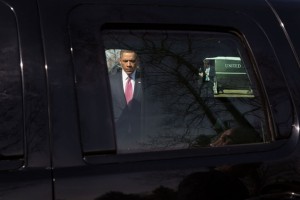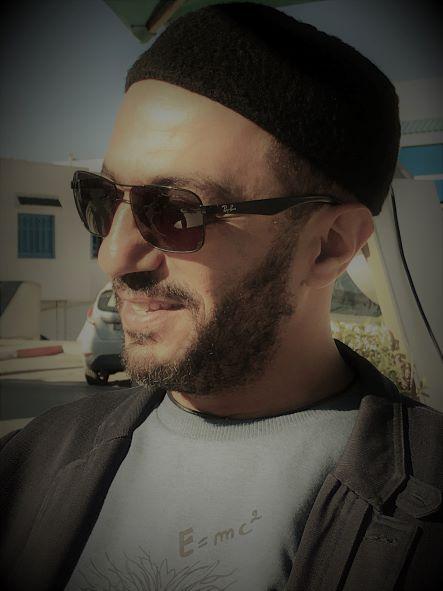Circassian beauties and the ugly face of race
By Khaled Diab
The curious cases of Rachel Dolezal and the Circassian ladies show just how meaningless race is, while Dylann Roof underlines the dangers of racism.

Tuesday 7 July 2015
Rachel Dolezal is not the first white American woman to sport a fake Afro. A century and a half earlier, so-called “Circassian ladies” were all the rage as circus sideshows.
The bizarre phenomenon capitalised on the craze created by Johann Friedrich Blumenbach's pseudo-scientific theories of race, which traced the roots of white people to the Caucasus, and his belief that “the purest and most beautiful whites were the Circassians”.
These whiter than white circus performers were not actually Circassian and, unlike the ideal of Circassian beauty elsewhere in the West, their hair was not of a luxuriant and smooth silky texture, but was wild and curly, an effect produced through liberal shampooing with beer.
“The hair may have been an effort to suggest blackness… a nod to popular conceptions of African female sexuality,” wrote Charles King, an expert of the Caucasus at Georgetown University.
The long shadow of slavery can also be discerned in this hybrid depiction. American audiences were both intrigued and horrified, given their false association of slavery with Africans, by the fact that Circassian women were among the most sought-after concubines in the Sultan's harem – hence the need to make them appear somewhat African.
“Both African slaves and Circassian slaves were subject to sexual exploitation… and this is the point of contact that played so powerfully on white Americans' imagination,” wrote philosophy professor Gregory Fried. Beyond America's shores, however, slavery was a multiracial institution, and slaves could sometimes even reach the highest corridors of power, as the Mamluk warriors – slaves mostly from the Caucasus – who ruled Egypt illustrate.
The curious case of Dolezal and the Circassian ladies demonstrate just how meaningless the notion of “race” is. My five-year-old son and his friend made child's play of the self-evidence of this truth at the beach the other day.
Though both boys are half African from the actual African continent (Egypt and Somaliland), in American racial parlance, my blond son would easily pass for “white” while his silky-haired mate looks quite “Hispanic”. In short, these two multicultural polyglots, who are still blissfully oblivious to any attempts to pigeonhole their identities, would completely confuse America's rigid racial compass.

Despite the complexity and ambiguity of people's identities, America generally prefers clarity when it comes to African-Americans. This applies even to the highest echelons of the land. Take, as an example, Barack Obama, whom it would be most accurate to describe as “mixed race”, “transracial” or “multicultural”, but is rarely referred to as such.
This compartmentalisation does not begin to capture the nuance of his multiple identities. Obama's absent Kenyan father only gave him his name and half his genetic make-up. In contrast, his white mother, Ann Dunham (and maternal grandparents), gave him the other half of his genes but, more vitally, his upbringing. “What is best in me, I owe to her,” Obama admitted in passing in his memoir which, nonetheless, was titled Dreams From My Father.
Despite this, Obama is almost invariably described, both by admirers and bigots, as “African-American”. Though genetically he is as “white” as he is “black”, and culturally he is more the former than the latter, Obama is, as far as I'm aware, never referred to as “white”, though this is perhaps a more valid description.
For the late Ann Dunham, who did not believe in racial difference, questions of black or white mattered not a jot. However, society did not agree, and her son was labelled black from a young age, with all the discrimination that involves.
And the inability of the most powerful man in America – who is truly “transracial” – to escape racial categorisation can help us better understand the circumstances surrounding the Rachel Dolezal case.
It is easy to understand why African-Americans are offended by Dolezal's claim of being “transracial”. She evokes painful memories of “blackface”, and the long tradition of white Americans mocking, exploiting and appropriating black culture and identity.
Though clearly an impostor and possibly unhinged, Dolezal is not the only one pedalling untruths. After all, despite the overwhelming scientific, social and cultural evidence that race is a fantasy, Americans of all political stripes still believe, in one way or another, in this fallacy.
At the core of America's racial identity crisis lies the legacy of slavery – both for the descendants of those who benefitted and those who suffered from its crushing weight. In this light, attempts to separate racial identities are, paradoxically, important to those trying to maintain white privilege and often to those combating it.
In America, even possessing slight African heritage is enough – culturally today, legally in the past – to qualify you as black.
For instance, when I was a kid I was intrigued by how Lisa Bonet (who is of mixed African-Jewish descent) was a “black” character in the Cosby Show, even though she was paler than I was. Her one-time husband, Lenny Kravitz, who is also of a mixed African-Jewish background, was criticised early in his career for being not black nor white enough in his music.
Though race is a myth and an artificial social construct, racism is a far-reaching and bitter reality, as illustrated by Dylann Roof and his horrendous, unprovoked cold-blooded murder of black worshippers in Charleston. “Segregation did not exist to hold back negroes. It existed to protect us from them,” claimed Roof in a manifesto he wrote. “Integration has done nothing but bring whites down to [the] level of brute animals.”
Of course, the overwhelming majority of Americans find the Charleston terror attack reprehensible and a heinous crime against peaceful worshippers and innocent citizens. However, though dangerous and deadly, it is not this form of racism that has the greatest collective impact. It is the common-or-garden, mundane, institutionalised variety that condemns millions of African-Americans to dwell disproportionately behind the actual bars of prison and the figurative bars of poverty and marginalisation.
This everyday racism in the contemporary USA needs to be challenged with as much urgency and resolve as the white supremacist, “retro” variety of yesteryear's Confederacy.
____
Follow Khaled Diab on Twitter.
This article first appeared on Al Jazeera on 25 June 2015.


I read articles like yours and can’t help wondering if racism is genetic. Slavery is multicultural and ancient – almost certainly prehistoric. I know I’m not suggesting anything new, but isn’t possible that slavery has affected us genetically?
If racism is genetic then it is easier to understand Nazi Germany. Geneticists talk about gene “expression.” A gene can be dormant until some condition causes it to become active and “express” itself. The communal madness of the Nazis was so strong it is difficult to believe it was caused by just abstract ideas about racial purity. They didn’t just make the Jews slaves, they set out to systematically destroy them.
However, I think it is an error to attribute that racial madness to all of the Germans. After all, many of the Jews being killed were Germans and not every German was a racist (Oskar Shindler for example). I think it might be better to look at racism as discrete genetic streams flowing through populations – waiting unseen until social or environmental conditions cause them to “express.”
Your observation that America describes Obama as “African American” is as much Obama’s fault as it is America’s fault. Remember, Obama is a politician. He exploited and rode that racial misconception to the Presidency of the United States.
An interesting read
Fascinating article!
More debate available here https://www.facebook.com/aljazeera/posts/10153533523143690
This is great. Thanks
good stuff brah
Jubg said “The American identity has the intellectual style of the European, the emotions of the negro and the soul of the Indian.” I have often thought he was right.